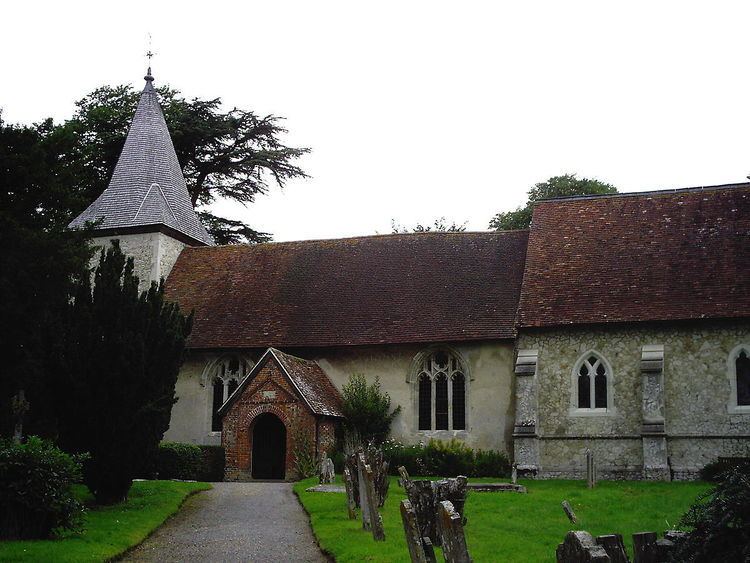Population 664 (2011 Census) Civil parish Farringdon | OS grid reference SU709350 Sovereign state United Kingdom Local time Thursday 7:16 PM Dialling code 01420 | |
 | ||
Weather 8°C, Wind N at 5 km/h, 78% Humidity | ||
Farringdon is a village in the East Hampshire district of Hampshire in England. The village is 2.8 miles (4.5 km) south of Alton, on the A32 road, close to a source of the River Wey.
Contents
Map of Farringdon, UK
The village has two parts, the larger being Upper Farringdon. Lower Farringdon is on the Alton to Gosport road, the A32. The 2001 census predicted a population for Farringdon Parish by 2006 of 495 increasing to 664 at the 2011 Census .
The northern of the River Wey's two sources rises in countryside close to Farringdon (Grid Reference: SU707394).
History
Archaeological finds in the village include a Bronze Age beaker (found in September 1938) with a cruciform design on the base, of which only two examples are known; and a Roman coin, a Sestertius of Trajan (found in 1936). Both are now in Alton Museum. Farringdon was listed in the Domesday Book as Ferendone; the word means fern-covered hill. The village has a Norman church and a number of pre-18th Century houses.
Notable people and buildings
Farringdon has close associations with two of Britain's most celebrated figures, the novelist Jane Austen (1775-1817) and the naturalist Gilbert White (1720-1793). Austen would come from her home in nearby Chawton, a little over a mile to the north, to visit friends and acquaintances in Farringdon. From 1761 to 1785 White was curate of Farringdon's village church of All Saints, and his pulpit still survives. One of the parish registers contains entries in his handwriting. Gilbert White's house, now a museum, is a little over three miles west of Farringdon. All Saints has Norman and 12th/13th century origins and retains good stained windows. The churchyard contains yew trees reputed to be of great antiquity; the hollow nature of the trees makes ring-counting dating impossible, but estimates have suggested that the trees may be as much as 2,000 years old.
A Farringdon landmark is Massey's Folly, an imposing but eccentric building with towers and battlements built by another curate of Farringdon, Rev. T.H. Massey. Its intended purpose during its construction was obscure, but since a few years after the Reverend's death in 1919 it has served as a school and village hall and featured in the 2006 BBC TV programme, Restoration Village. Massey's Folly is in the process of being sold for development as residential units. The Rev Massey also built a Vicarage in the Village (now a private house).
The very first Cadbury Milk Tray advert was filmed in Lower Farringdon, by Woodside Road, along the old Meon Valley Railway
Transport
Farringdon's closest railway station is at Alton, 2.8 miles (4.5 km) north of the village. The A32 passing through Lower Farringdon was formerly a major route, but the old Alton-Gosport road is passed to the west and east by two major trunk routes, the M3 and the A3(M). As result, traffic density through Farringdon is relatively light. A 30 mph limit is in force.
